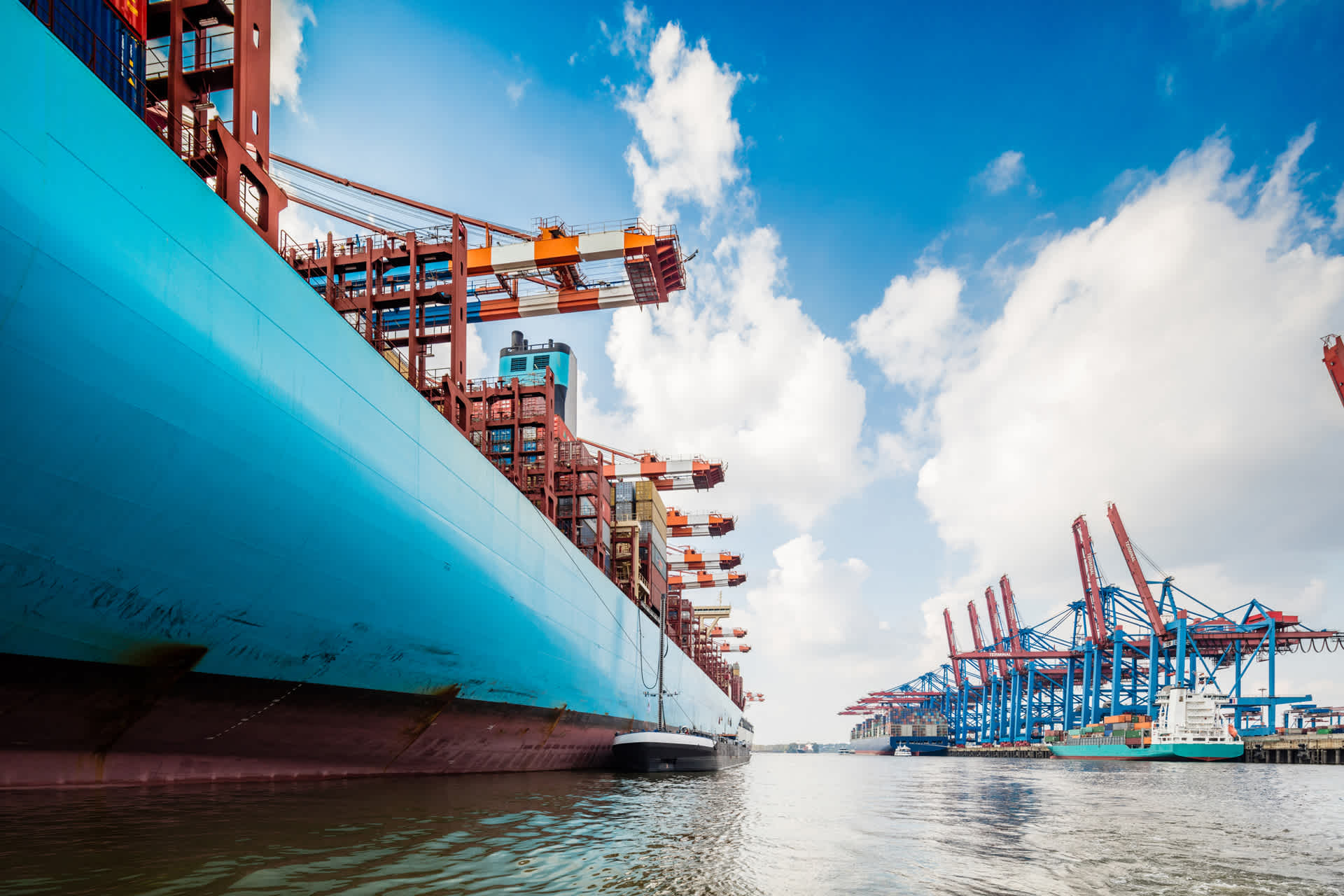Global Logistics Update
Freight Market Update: July 26, 2022
Ocean and air freight rates and trends; customs and trade industry news plus Covid-19 impacts for the week of July 26, 2022.
Freight Market Update: July 26, 2022
Logistics Rewired x FMU Live | Thurs, July 28 @ 8:30 am PT / 11:30 am ET
European Freight Market Update Live | Tues, August 9 @ 16:00 pm CEST/ 15:00 pm BST
Ocean Freight Market Update
Asia → North America (TPEB)
- Spot rates continue to fall with blank sailings on the rise. Blank sailings remain all too common in the market, which carriers are pairing with the low spot rates and demand. Schedule reliability among the alliances remains low and varied. On-street container dwell is elevated and inventory on terminals is reaching max capacity at some inland locations. Containers are ground stacked at the rail as a result of the insufficient chassis supply and-or rail traffic imbalances in: Chicago, Dallas, Kansas City, Memphis, Denver, St Louis, Santa Teresa and Omaha. Temporary service pauses and train metering have been enacted by the railroads.
- Rates: Rates remain soft in many major pockets.
- Space: Open, except in a few pockets.
- Capacity/Equipment: Open, except in a few pockets.
- Recommendation: Book at least 2 weeks prior to cargo ready date (CRD). For cargo ready now, importers might consider taking advantage of currently available space and softer floating market rates.
Asia → Europe (FEWB)
- While volumes have picked up in Q3 there is no strong peak season. Supply is still relatively tight due to the large amount of blank sailings, vessel sliding, and port omissions. The port congestion in Europe particularly for Hamburg and Rotterdam has reached critical levels. Various sailings are having to omit Hamburg calls and divert to alternative ports. There are indications of power cuts in Ningbo (Zhejiang province) which would affect production output but there is still no official information available.
- Rates: Rates are on a somewhat downward trend going into 1H August.
- Capacity/Equipment: Space is available but it is impacted by additional blank sailings and delays due to the port congestion in Europe.
- Recommendation: Allow flexibility when planning your shipments due to anticipated congestion and delays.
Europe → North America (TAWB)
- Demand for August is expected to be lower due to some European factories closing from late July until mid-August. Anticipate a high return of demand beginning in September. Congestion is improving on both the East and West Coast but is still far from normality.
- Rates: Stable at high levels. No sign of steep rate decline in the near future. Some drop on FAK levels ex Italy/Turkey and Greece.
- Space: Still very tight with pockets of space available in August.
- Capacity/Equipment: Equipment availability remains the biggest challenge for all EU origins, particularly in the Mediterranean area. Low empty stacks at inland depots, prioritize pick up from the Port of Loading.
- Recommendation: Book 4 or more weeks prior to CRD. Request premium service for higher reliability and no-roll.
- Read more: Rising US imports keep pressure on trans-Atlantic
Indian Subcontinent → North America
- Abnormal sailing schedules persist as carriers continue to deal with elevated congestion at U.S East Coast (USEC) ports.
- Rates: remain at lower levels compared to peaks just a few months ago. Some key ocean carriers are bullish on demand and have already implemented rate increases on services to the USEC.
- Capacity/Space: Available at Freight All Kinds (FAK) rate levels. Capacity to USEC is being constrained due to ongoing berthing delays in Savannah as well as on-dock issues at NY/NJ. Vessels are taking longer to return back to India for loading, which is resulting in irregular sailing schedules and port omissions.
- Equipment: Rising equipment deficits are being reported across India, particularly in smaller ports and inland container depots (ICD)
- Recommendation: Take advantage of declining rates. In the past carriers have implemented blank sailings to avoid underutilization. This could lead to increased rates being on the horizon.
North America → Asia
- Vessel arrivals and available capacity remain fluid for all U.S. West Coast (USWC) ports. USEC ports continue to see challenges with vessel congestion and some vessel strings still omitting Charleston and Savannah entirely. Erratic vessel schedules continue to cause significant challenges with posted earliest return dates and vessel cut-offs at the port.
- Rates: No GRI’s announced for August.
- Capacity/Equipment: Deficits on containers and chassis continue to plague Inland Port Intermodal (IPI) origins. Chicago has been the most reliable. Availability for standard equipment has not been an issue for most ports. Capacity from the US Southeast to India remains constrained due to continuing port omissions for Charleston and Savannah.
- Recommendation: Please place bookings 4 weeks prior to vessel Estimated Time of Departure (ETD).
North America → Europe
- Congestion issues persist in Europe due to local labor actions at baseports in Germany and the Netherlands. The port of Houston continues to experience significant capacity constraints due to schedule delays and port congestion with one service being reduced from weekly to biweekly. USWC service to Europe remains extremely tight due to void sailings and skipped ports caused by systematic delays. USWC coverage for Mediterranean ports now has reduced capacity due to one string being phased out.
All carriers have issued a booking stop for shipments to Ukraine, Russia, and Belarus. - Rates: No GRI announced for August.
- Capacity/Equipment: USEC service to Northern Europe has capacity available. Vessel capacity from the port of Houston has been very tight due to a significant increase in demand and delayed vessels. Deficits are still plaguing many IPI origins. Availability for standard equipment at ports has not been an issue, but special equipment is hard to come by.
- Recommendation: Please place bookings 3 to 4 weeks in advance for East Coast/Gulf sailings and 6 weeks for Pacific.
North America Vessel Dwell Times

Air Freight Market Update
Asia
- N. China: The market is picking up and airlines have increased rates on both the Transpacific Eastbound (TPEB) and Far East Westbound (FEWB) tradelanes as capacity begins to tighten a bit. On the TPEB tradelane, and due to continued port and rail congestion in the U.S., ocean to air shipment conversions are trending upwards. For the FEWB tradelane, Lufthansa Cargo has reported an easing of the bottlenecks at its Frankfurt (FRA) hub, however they are still continuing to divert some freighters to Munich (MUC) for the rest of July. Overall, we still see carriers canceling flights for FRA. Amsterdam (AMS) and London Heathrow (LHR) are also facing disruptions due to the manpower shortage as well as record high temperatures.
- S. China: The market demand is soft for both TPEB and FEWB lanes and rates levels have also decreased slightly from last week. Shenzhen - Hong Kong (SZX-HKG) cross border operations have also been affected due to a surge in Covid cases and a subsequent quota reduction of at least 50%. Shipments that need to be trucked to Hong Kong should expect longer transit times.
- Taiwan: The market is normal and rates are stable. There is some increased demand due to the month’s end but capacity is manageable.
- Korea: The market ex-Korea remains the same as the week prior with demand continuing to be very slack with no signs of picking up anytime soon.
- SE Asia: Demand ex-Malaysia continues to be soft and is expected to remain so through August. Ex-Thailand demand is picking before the month’s end with shippers rushing to release shipments prior to the long holiday from July 28-30. JL has announced some flight cancellations to the U.S. due to crew shortages due to Covid. Overall capacity is still open and rates remain at similar levels to last week. Demand ex-Vietnam is still slow and many carriers have canceled flights as a result. Hubs such as Incheon (ICN) and Hamad (DOH) are experiencing some congestion so cargo transiting in these locations will have slightly longer transit times.
Europe
- Demand continues to trend at a lower level and is not expected to increase through August.
- Capacity level is constant. Most of the TA widebody capacity concentrated on major airport-pairs but deferred PAX routings continue to grow.
- Rates remain stable. Jet fuel price continues to show slight decreases week over week.
- Ground operations have slightly improved, but are not yet back to normal in major European hubs like AMS, LHR, and FRA.
- Build pallets below 160CM to increase possibilities of better uplift options and rates on passenger aircraft capacity.
- For all trade lanes, continue to place bookings early to secure best uplift options and routings.
Americas
- Export demand continues to ease due to a very strong U.S. Dollar.
- US airports are running at a normal pace.
- Capacity is manageable into all the Regions. European carriers in particular have increased the number of passenger flights for their summer schedules, consequently providing additional belly capacity into the Transatlantic Eastbound (TAEB) trade lanes.
- Shipments into Europe could experience additional destination dwell time due to the labor shortages in some western European hubs.
- Rates remain stable week over week.
Trucking & Intermodal
Americas
US Import/Export Trucking: Market Trends
- Congestion continues at the Montreal and Toronto terminals and inland ramps. The volume coming into Toronto continues to surge, while the number of drivers continues to decrease, which translates into less drivers handling more volume and creating the previously mentioned congestion. On a YTD basis, the total truck visits to the rails has declined by almost 20% percent.
- Chassis shortages continue to persist, notably now in Memphis (95% utilization, 10+ day street dwell time) and in LA (9.5 day street dwell for 40’).
- East coast and gulf congestion will continue through July, with vessels at anchor in New York, Norfolk, and Savannah with 36 ships at the end of June awaiting berths with wait times in the 7-10 day range.
- Los Angeles/Long Beach (LA/LB) conditions have improved with only 3 ships at anchor at the end of June, and port dwells down to less than 5 days. Rail dwells continue to be elevated.
- Highway Diesel fuel prices remain at record highs
- East Coast ($5.85/gallon), Midwest($5.63/gallon), and Gulf coast ($5.37/gallon)
- West Coast ($6.42/gallon), California ($6.90/gallon) and Rocky Mountain($5.69/gallon)
- British Columbia, Quebec and Ontario (~$7.3/gallon)
US Domestic Trucking: Market Trends
- The domestic FTL market has been suffering from the inventory glut with the highest inventory/sales ratios in history, current global inflation, record high diesel fuel prices, and most recently the sharp drop in container imports.
- Tender rejections by carriers has decreased by nearly 70% from 2020/2021 averages.
- Spot rates in the market have bottomed out to a 16-month low, down ~35% YTD, Contract rates fall in recent weeks after edging up for several months.
- Load-to-Truck ratios are down ~30% YoY, which is the key barometer for supply/demand in the marketplace.
- Tender volumes are down 19% YoY.
- Diesel prices remain at record highs, most recently $5.718/gallon. Fuel continues to be a much more taxing operating expense for fleets both on loaded and empty miles—It also increases contract rates which are primarily on FSC schedules.
Customs and Compliance News
Compromise Semiconductor Bill Excludes GSP, MTB Renewal
On July 19, the Senate Committee released the compromise legislative package to alleviate the semiconductor chip shortage and shore up U.S. competitiveness with China, colloquially called “CHIPS+.” The bill combines the science provisions of the House’s America COMPETES Act of 2022 and the Senate’s U.S. Innovation and Competition Act (USICA), which have been under negotiation in a conference committee since May. The trade provisions for renewal of the Generalized System of Preferences (GSP) and Miscellaneous Tariff Bill (MTB) programs, originally included in both the COMPETES Act and USICA, were removed from the compromise bill, leaving the path forward for these programs uncertain.
Duty Free Treatment for Baby Formula Takes Effect
On July 21, President Biden signed the Formula Act into law. CBP issued CSMS #52739058 on July 22, listing impacted HTS codes and associated Chapter 99 tariff codes to claim duty free treatment.
DUNS Now Required for Foreign Supplier Verification Program
As of July 24, the Food and Drug Administration ended its policy of allowing the entity identification code “UNK” (unknown) in place of the DUNS number for the foreign supplier verification program (FSVP) importer on entry forms. CBP will reject an entry line of a food subject to the FSVP regulation when the importer’s DUNS number is not provided in the Entity Number field. The DUNS number is currently the only unique facility identifier recognized as acceptable by the FDA for importer identification.
Factory Output news
- U.S.: The latest manufacturing flash Purchasing Managers’ Index (PMI) fell from 52.7 in June to 52.3 in July, indicating further demand deterioration as the index reached its lowest level in 2 years due to falling new orders and unchanged production levels. New export orders fell month over month. Source
- U.S.: Industrial production decreased 0.2 percent in June, according to the latest Chicago Fed National Activity Index published on July 25. Source
- U.S.: The July 2022 manufacturing business outlook survey, published by the Federal Reserve Bank of Philadelphia, indicated declining manufacturing activity in the region. Indicators for current activity and new orders remained negative month over month, while the shipments index rose slightly. Source
- Mainland China: Zhejiang Province witnesses a rebound in overseas business over the first half of the year. Import and export value of private enterprises grew by 20.9 percent year-over-year. Source
- Vietnam: Textile and garment industry exports on target to hit $43b this year. Source
- Cambodia: Increasing exports reflect Cambodia’s production and supply capacity. Source
- Singapore: WuXi Biologics to invest S$ 1.4bn to expand its Singapore manufacturing capabilities. Source
- India: Textile and garment export rose by 16.7% in the same period of the previous year. Source
- Bangladesh: Furniture export hit a high of USD$110 million for Bangladesh Market last fiscal year. Source
Freight Market News
Protests at Port of Oakland Quiet Down
According to The Loadstar, cargo is finally flowing through the port of Oakland following the truckers’ blockade and protests against AB5. On Friday, the vessel backlog had reached 12, and dwell times of import containers had risen to more than two weeks.
Softening Demand Drives Down Rates
As supply chain disruptions ease and consumer demand cools, freight and charter rates are trending downwards, despite remaining elevated by historical standards—according to The Loadstar. This has prompted liners to enact blank sailings to cut back on effective capacity and keep rates up.
Flexport Research Updates
Weekly Economic Report: All Rise
The European Central Bank joined the U.S. Fed in hiking rates this past week. It did so to address high and rising inflation, but a key challenge will be dealing with the indebtedness of key member states.
Air Timeliness Indicator: TPEB ~ @ 11.5 days, FEWB ↓ @ 9.7 days.
Ocean Timeliness Indicator: TPEB ~ @ 95 days, FEWB ↓ @ 92 days.
US: In the latest update, container shipping rates fell for a fifth straight week on a four-week trailing average basis while the time taken for the first stage of the ocean shipping process fell to the lowest since May 2021.
EU: Consumer and industrial confidence continued their decline towards pandemic era lows. The potential for reduced activity resulting from lower confidence can be seen in falling shipping rates and ocean handling times.
Freight Market Update is a complimentary service from Flexport, the modern freight forwarder. If you're not already a subscriber, we invite you to subscribe here.
Please note that the information in our publications is compiled from a variety of sources based on the information we have to date. This information is provided to our community for informational purposes only, and we do not accept any liability or responsibility for reliance on the information contained herein.


